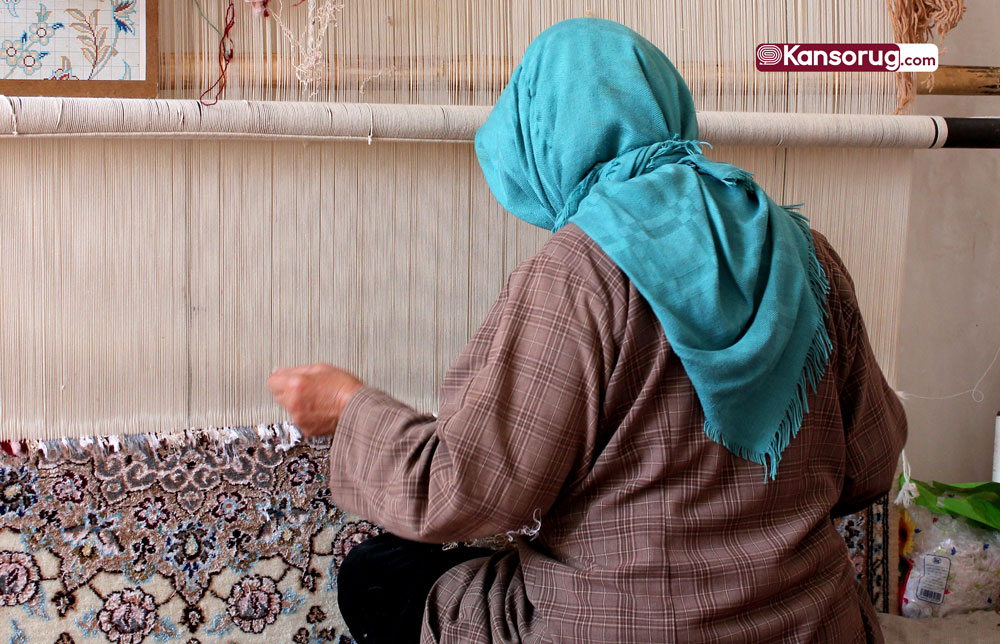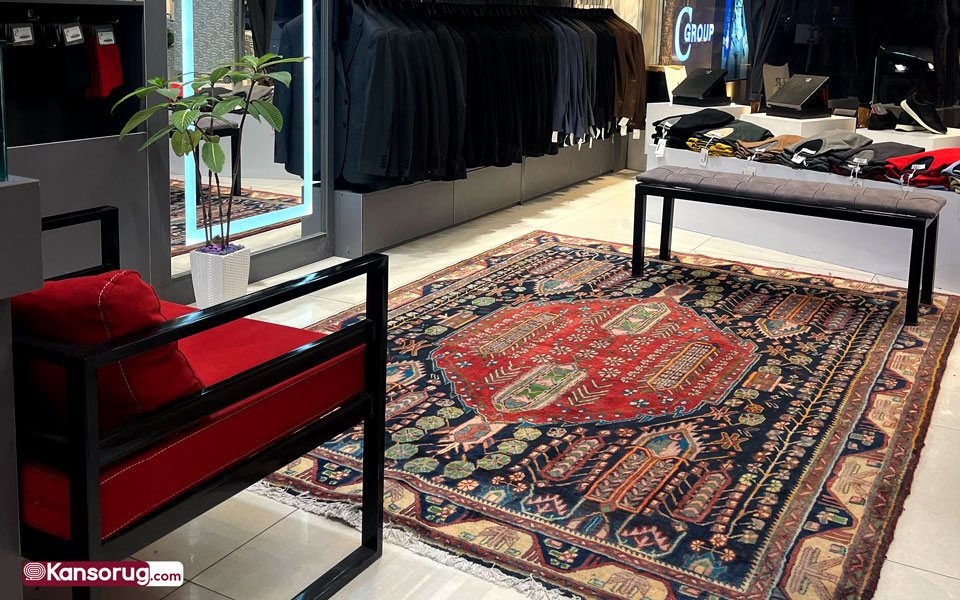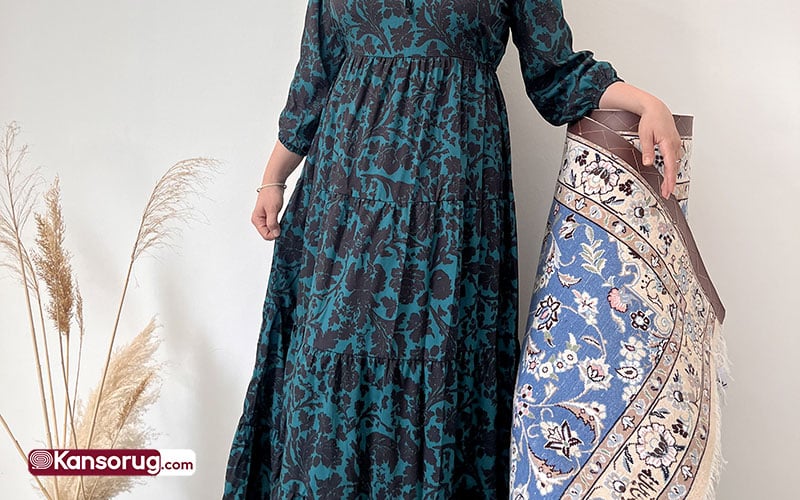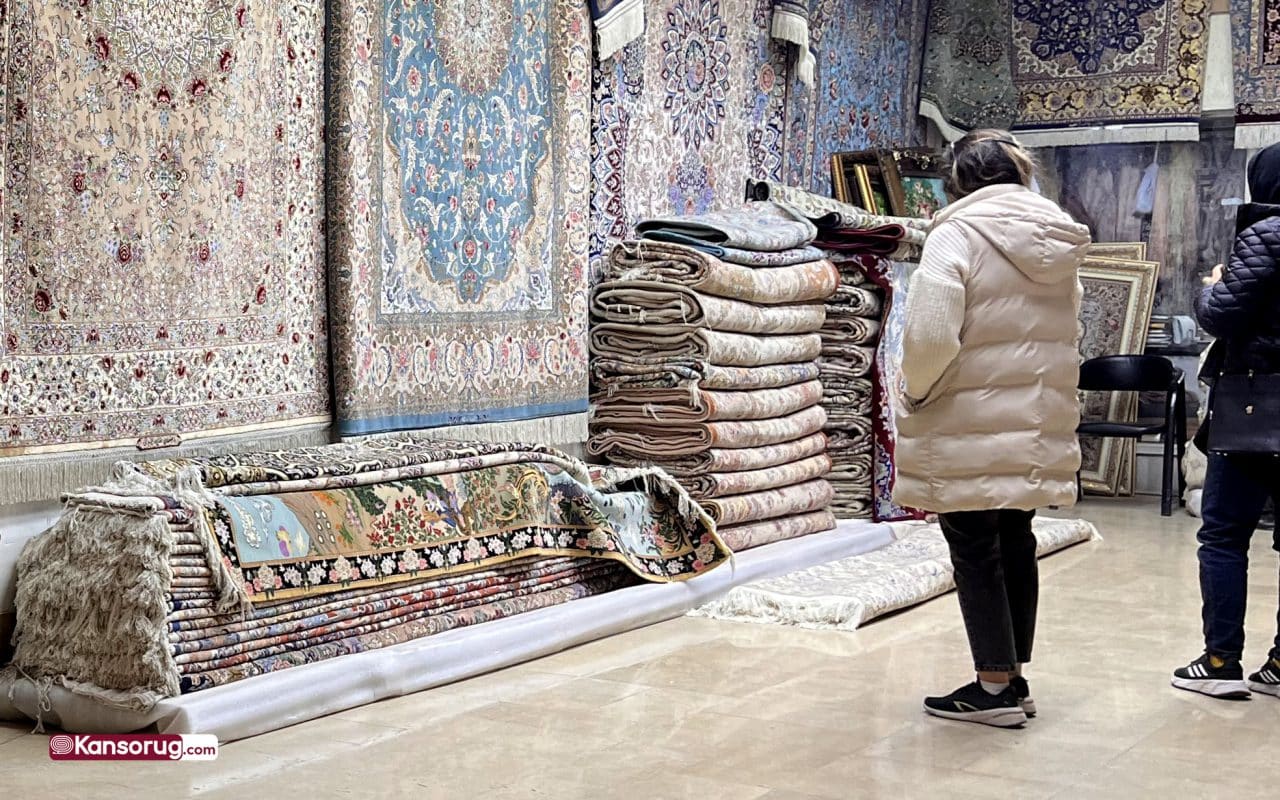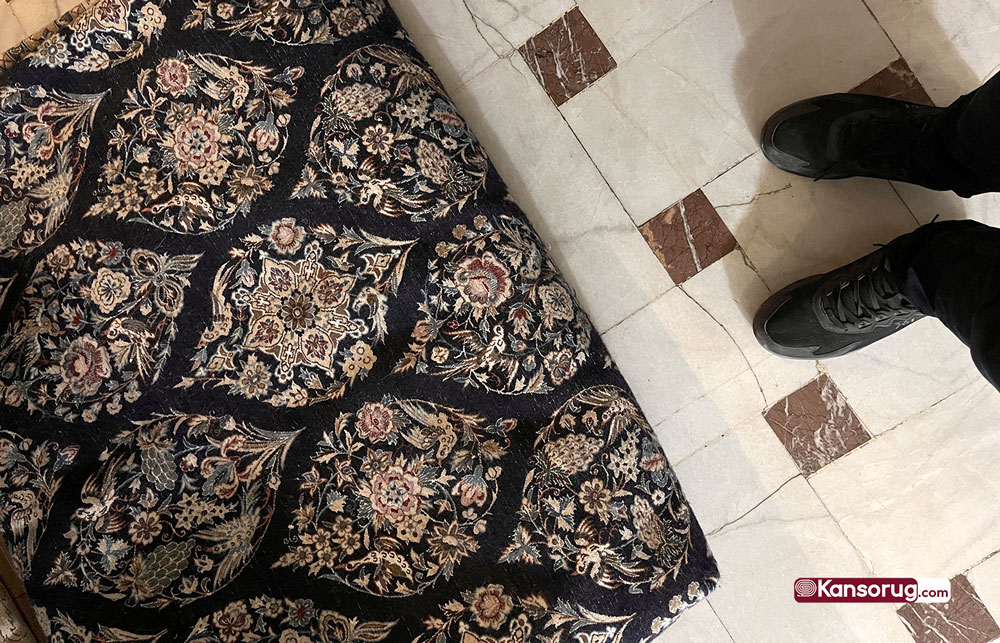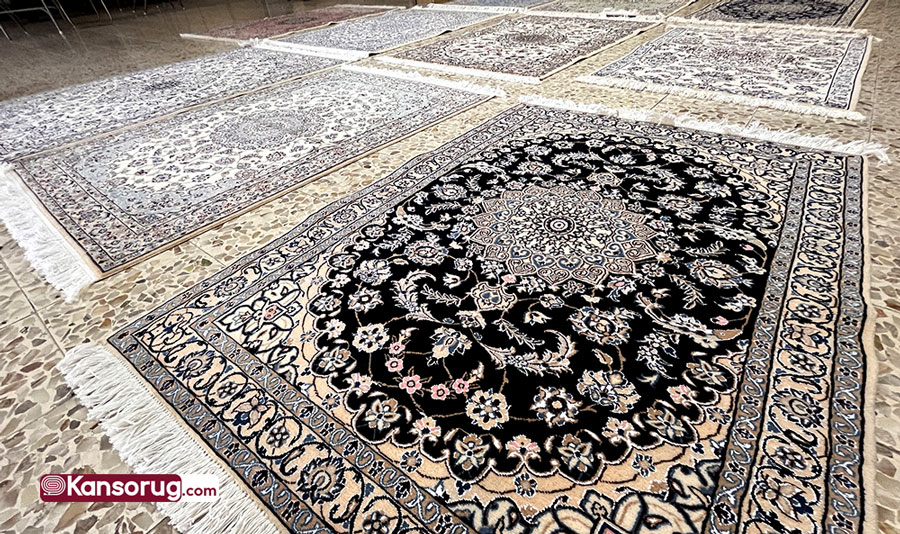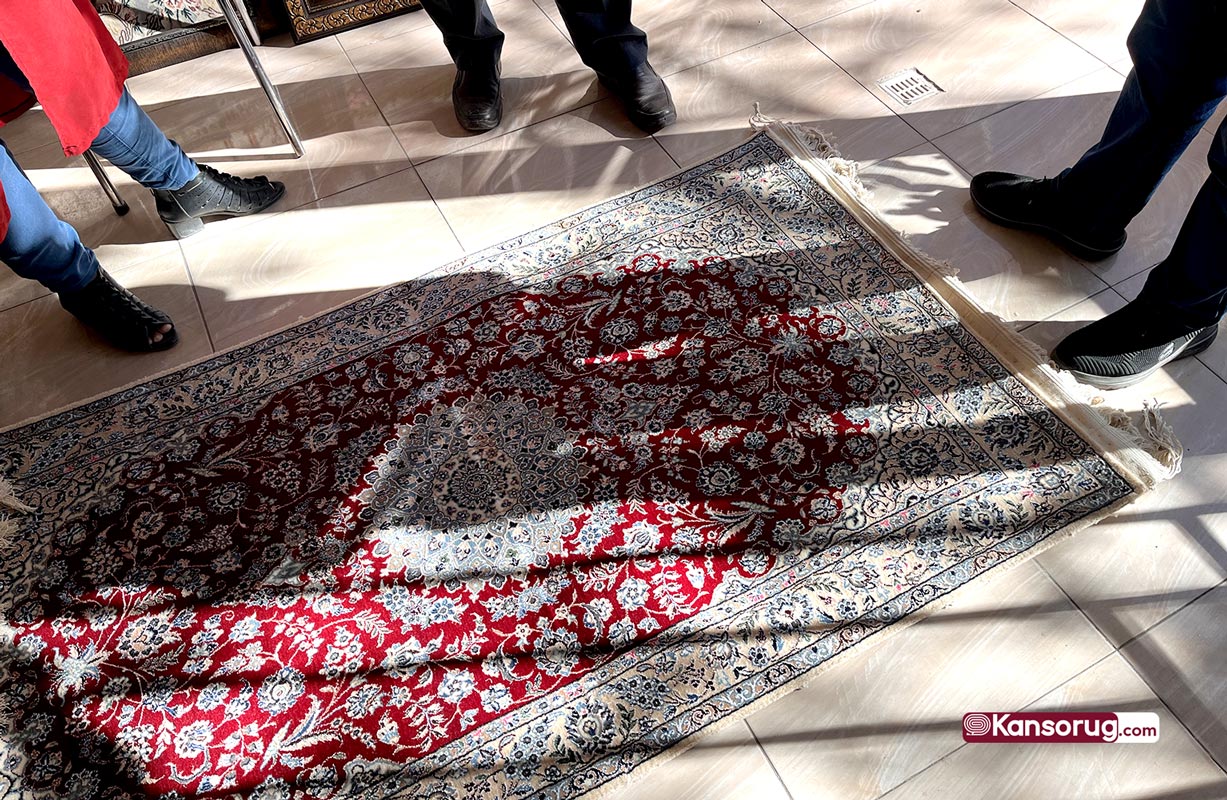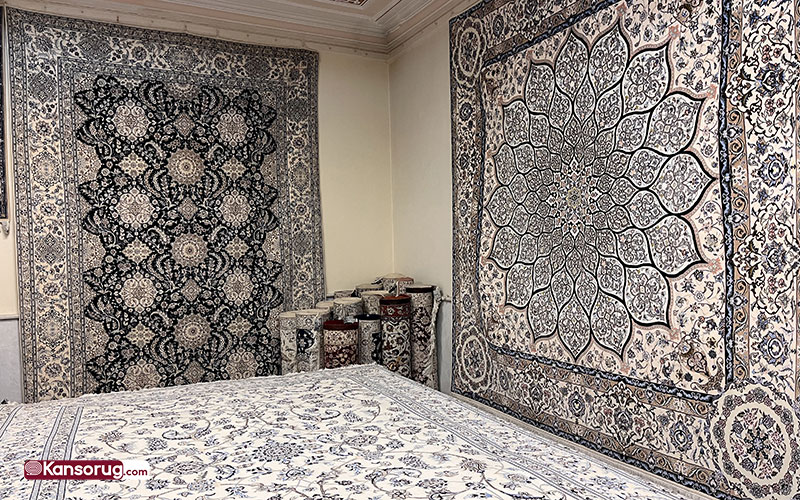Whether for its health benefits or its beauty and durability, opting for a hand-woven carpet is a valuable decision that can be likened to a long-term investment. However, navigating the multitude of brands and diverse countries, each with unique quality and design, can be challenging. Let to know What is the best carpet in the world? which country has the best carpet?
How does one choose among Iranian, Indian, Pakistani, Kazakh, Afghan, Turkish, or Moroccan carpets? Which is better and worth the investment? Which country makes the best carpets in the world?, and Which city is famous for making carpets? Is a Persian carpet truly worth the investment?
Firstly, it’s important to identify the top 6 countries renowned for producing handmade carpets. While any woven material used as flooring can be considered a carpet, it’s crucial to recognize that a handwoven carpet is more than just a simple floor covering.
In This Blog...
ToggleTop 6 Carpet-Producing Countries in the World: World Best Carpet Country
1. Iran: Royalty in Rugs
Which country is the largest producer of carpets? Iran is the birthplace of the famed Persian Rug, renowned for its intricate patterns and natural color combinations. Woven with traditional techniques passed down through centuries, Iranian Persian rugs symbolize royalty and prestige, with many lasting over a century.
2. India: Crafted Tradition
India’s handmade rug market has flourished, offering a range of top-quality rugs such as Ziegler, Oushak, and Persian rugs. While similar to Iranian designs, some are dyed with synthetic colors. Though not as durable, Indian rugs provide affordable options for those on a budget.
3. Pakistan: Diverse Elegance
Pakistani rug weavers blend Persian and tribal designs, creating diverse styles, including Kilim, Oushak, Persian, Tribal, and Baluchi rugs. Due to import sanctions on Iranian rugs in Western countries, Pakistani rugs have gained a reputation for quality and are shipped worldwide.
4. Turkey: Timeless Beauty
Turkish handmade rugs, especially Oushak and Kilim rugs, are globally popular for their durability, unique designs, and soft wool. Drawing inspiration from Europe, North Africa, and Asia, Turkey has a rich history of rug-making, offering a unique and enduring style.
5. Kazakhstan: Hidden Gems
Kazakhstan may not be a major rug producer, but it crafts some of the world’s most unique handmade rugs. Kazak rugs feature plant and animal imagery, using natural wool and goats’ hair for strength. With striking traditional colors and patterns, Kazak rugs stand out as hidden gems in the world of handmade rugs.
6. China: Brand Copy Master
In recent years, China has become a significant player in reproducing products and brands globally, allowing it to enter the world market with competitive prices, supported by the Chinese government, and low labor costs. This widespread production has made distinguishing between original and replicated items challenging. Handwoven carpets, including copies of Persian, Turkish, and Pakistani designs, face the same issue, adding to the difficulty of identifying authentic pieces.
What is so Special About Persian Carpets?
When faced with the vast array of handwoven carpets in the market, the question arises: Which is the best rugs in the world to buy? Various countries, such as the Netherlands, Germany, Iran, Turkey, Afghanistan, and China, are prolific producers of carpets, each offering a multitude of options.
Deciding which carpet to choose involves considerations of budget, decor matching, and, crucially, the features that make a carpet worthwhile. Opting for handmade carpets made from natural materials, featuring original patterns, elegance, uniqueness, and durability can serve as valuable guiding factors. For example, Chinese carpets often use artificial materials, while Indian carpets may be thick with less elegant designs.
If you seek affordability, you might compromise on elegance, but for a durable and original handmade carpet, exercising patience to find the right one is key. Distinguishing machine-woven carpets from their handmade counterparts requires expertise. In the following sections, we will guide you on how to estimate the value of a carpet.
What Should I Look for in a Hand-knotted Carpet?
1. Carpet Material Is Important:
The materials used in handwoven carpets are critical factors in determining their value. If artificial materials like plastic threads or chemical wool are incorporated, the carpet’s value inevitably decreases. For instance, while Chinese carpets may closely resemble original carpets, the key distinction lies in the materials used. In the Iranian market, the presence of even the slightest artificial material results in rejection by traders and a significant drop in value. Consequently, the Iranian market predominantly features carpets with minimal or no artificial materials.
Guide: To identify the use of artificial materials, one can examine the wool of the carpet or burn a thread to observe its reaction. If the yarn lumps during ignition, and the fibers gather or melt, it indicates the use of synthetic fibers or polyester. Conversely, natural fibers like cotton, wool, or viscose will ignite and pulverize without lumping or melting when exposed to flame and heat in this process.
2. The Carpet Weaving Method is Important:
The correct and authentic texture holds significant importance across various carpets. For instance, the original texture, crafted according to traditional methods and Persian handwoven carpet traditions, stands as one of the pivotal factors in pricing. Unfortunately, recent years have witnessed the advent of various carpet weaving methods worldwide, often deviating from the elegant traditional approach. Carpets woven by laborers in Chinese or Pakistani workshops, for example, have compromised the soul and narrative of the craft. Meanwhile, the use of cheating to mimic similar brands globally has become a prevalent trend.
Another aspect scrutinized by Iranian market traders in Persian rugs is the weaving method. Carpets that adhere to traditional principles, boasting strong knots and following the techniques of old master craftsmen, garner particular interest. Failure to comply with these standards diminishes the value of the weaver’s efforts. Consequently, observing seemingly simple but fundamental points becomes crucial in determining the value of Persian handwoven carpets. The significance of preserving artistic originality remains paramount in the world today, offering a reprieve from the mechanical and soulless nature of contemporary life.
Guide: When purchasing a Persian handwoven carpet, pay close attention to the back of the carpet. The regular and neat knots serve as indicators of its quality and texture. Inquire with the seller about the carpet’s place of weaving, the region of production, and the overall quality. Keep in mind that each region in Iran specializes in a distinct type of carpet with its unique weaving method.
3. Unusual Differences in Dimensions or Design:
Unusually pronounced curves, and asymmetry at the top and bottom of the carpet, reflecting disparities in sizes and the symmetry of designs, can be considered defects that diminish the carpet’s value. When designs lose their intended meaning and concept, it further contributes to the reduction in value. Additionally, issues arising during preparation, such as problems with dyeing after washing, can impact the overall quality. It’s important to note that minor differences are inherent in handmade art, but significant problems that are immediately noticeable should be discussed in detail with the seller. In the Iranian market, carpets with superior shape, dimensions, and well-executed designs are more highly valued.
Guide: When making a purchase, inquire about the dimensions of the carpet. If the seller provides a guarantee, the health of the dimensions and texture will undoubtedly be among the key factors.
4. Listen to the Story of the Carpets:
The story behind each carpet, infused with the essence of the weaver, is an integral part of the existential philosophy of handwoven carpets. This essence was born not in workshops or on carpet weaving machines but through centuries of tales spun by weaving men and women. From the Pazyryk carpet the oldest Persian Carpet, to the carpets of the Safavid dynasty in Iran, showcasing the pinnacle of beauty and design, there is a common thread—an original story as timeless as the tales of the Thousand and One Nights.
At first glance, they may seem alike, but delving into the feel and motivations of a weaver reveals deep sentiments within each knot and every design narrates a unique story. This is a richness absent in the mass production of Chinese, Indian, and Pakistani carpets. With an Iranian carpet, you inherit centuries of authenticity and profound meaning.
Guide: When acquiring an Iranian carpet, inquire about its design, pattern, and weaver—prepare to be captivated.
Why are Persian Rugs so Expensive or What Makes Persian Rugs Valuable?
In a world filled with various brands, spanning from automotive to technology, the question arises: why choose Porsche and Mercedes-Benz among countless car options? Why opt for IKEA and Amazon in the vast landscape of online and offline stores? Amid numerous shoe manufacturers, what sets Nike and New Balance apart? The common thread among these renowned names is differentiation – a hallmark of quality, design excellence, and the ability to maintain authenticity while telling a compelling story of being the best.
The moment your feet touch a Persian carpet or your eyes behold its beauty, the difference becomes palpable. Consider integrating a Persian carpet into your home decor, and you’ll instantly elevate your space, making it uniquely special. For the Persian rug value calculator, you can get help from carpet experts in person or online. This is the answer to why Persian rugs are expensive and valuable.
Why Persian Rugs Are so Valuable?
One common inquiry among buyers of handwoven carpets is the distinctive value of Persian carpets compared to other brands like Indian, Afghani, Pakistani, or Turkish. What sets Persian carpets apart, creating a level of distinction that leaves a lasting impression on every guest in your home? Let’s delve into why choosing a Persian handwoven carpet is a decision marked by unparalleled beauty.
The following reasons aim to provide clarity on this matter.
1. Traditional Texture and Audible Stories of Each Carpet:
Persian carpets are woven by master artisans with centuries of experience, each telling a unique story through the weaver’s skill or design.
While the weaving method may appear similar across carpets from various global brands, Persian carpets boast crucial, precise, and nuanced details that set them apart. One noteworthy example is the concept of the ‘fringe’ in Persian carpets, intricately linked to the carpet itself as the continuation of the warp. In contrast, non-Persian brands often sew the fringes onto the finished rug or may lack fringes altogether.
2. Creative and Diverse Designs of Persian Carpets:
Iranian carpet designs, whether nomadic or featuring animals, are meticulously crafted with logic and principles, captivating every viewer. The intricate flower patterns, natural coloring, and unparalleled elegance bring depth and emotion to your home.
3. Natural Carpet Materials and Maintaining Health:
Persian carpets prioritize natural materials like wool, silk, and thread, ensuring skin health, breathability, and disease prevention. Iranian weavers adhere to the use of natural wool, traditional dyes, and high-quality silk, contributing to the carpet’s durability and timeless beauty.
4. A Persian Capital for Generations:
The tightly woven knots and high-standard fibers in Iranian carpets make them an heirloom, passing on to future generations. Their longevity is evidenced by carpets showcased in museums. Investing in an Iranian carpet becomes a long-term asset, attracting many buyers when you decide to sell or replace it.
5. Durability and Stunning Elegance of the Carpet:
If you haven’t owned a Persian carpet, inquire about its lifespan from friends or family who have. Persian carpets not only enhance your decor but also serve as works of art with delicate and enduring designs. Choosing a design from Qom, Nayin, Isfahan, Ardakan, Tabriz, etc., will showcase the unique and lasting difference.
Bottom Line:
In the end, it’s crucial to recognize that a brand transcends its name; its true worth unfolds over time. An Iranian carpet, with its ability to infuse depth and emotion into your décor and provide warmth underfoot for years, exemplifies the lasting impact of a distinguished brand. With a little exploration, you can discover a Persian carpet that aligns with both your budget and aesthetic preferences. I in answer to this question What is the best carpet in the world? Which is most famous? encourage you to visit Iranian sellers, armed with the guidance we’ve provided here, ensuring a secure and gratifying shopping experience as you enhance the beauty and design of your home.
Please rate Stellar
Your page rank:

